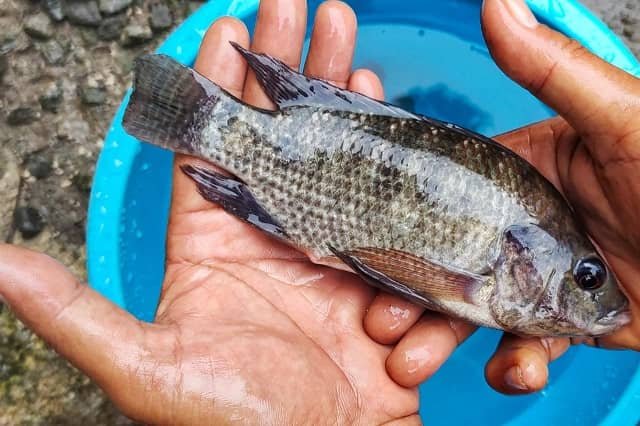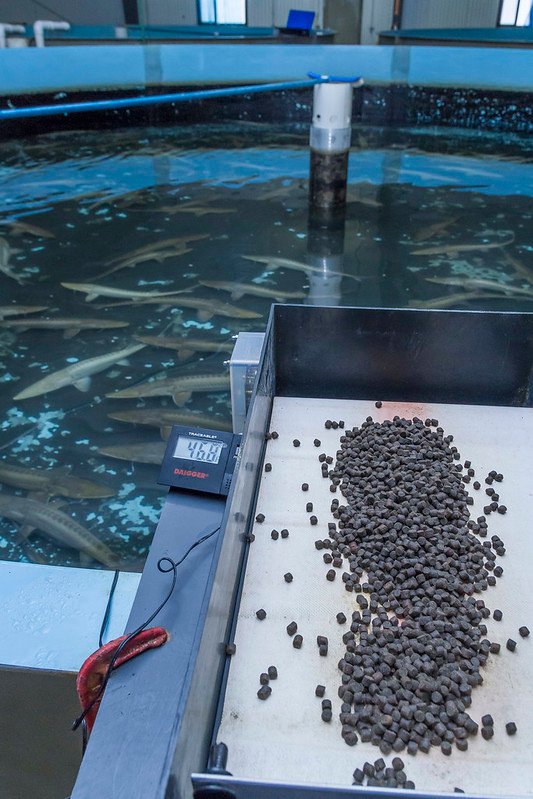
Nile tilapia (Oreochromis niloticus) aquaculture faces challenges such as disease outbreaks and suboptimal growth that can hinder efficiency. Therefore, various scientific studies have recommended formulating feeds for tilapia that promote growth, are immunostimulating, and rich in antioxidants to enhance the health, production, and sustainability of tilapia.
A team of scientists from Arish University, Ghent University, King Saud University, Universiti Islam Sultan Sharif Ali, the National Institute of Oceanography and Fisheries (NIOF), Zagazig University, among other organizations, conducted a 60-day feeding trial to explore the potential influence of dietary intervention with a mixture of oligosaccharides and β-glucan (OLG) on growth, feed utilization, body composition, biochemical parameters, growth-related genes, and resistance to Streptococcus iniae infection in Nile tilapia (Oreochromis niloticus).
What are oligosaccharides and β-glucan?
Prebiotics have emerged as an important input for aquaculture feeds because they support the growth of probiotics. Oligosaccharides and β-glucan are prebiotics that have been used in the feeding of different aquaculture species.
- Oligosaccharides: A type of prebiotic carbohydrate that beneficially nurtures gut bacteria, potentially improving digestion and overall health.
- β-glucan: A soluble fiber found in sources such as oats and yeast, known for its immunostimulatory properties and cholesterol reduction.
Key findings of the study
The study has revealed the impressive potential of a dietary mixture of oligosaccharides and β-glucan (OLG) to improve the health, growth, and resilience of Nile tilapia (Oreochromis niloticus), a species of great importance in aquaculture. Key results of this study include:
- Improved growth and feed efficiency: Tilapia fed with the OLG mixture exhibited better growth rates, as measured by final body weight, body weight gain, and specific growth rate (SGR). Importantly, they also achieved a desirable feed conversion ratio (FCR), meaning they converted feed into body mass more efficiently.
- Enhanced body composition: The OLG supplement produced significant improvements in fish body composition, suggesting healthier fish with potentially improved meat quality.
- Stronger immune response: Tilapia fed with OLG showed elevated levels of important immune system markers (lysozyme, IgM) and potent antioxidants (GPx, CAT, SOD), indicating a stronger defense against diseases.
- Positively regulated growth genes: The expression of genes associated with growth (GH and IGF-1) increased significantly in tilapia receiving OLG, pointing to greater growth potential at the molecular level.
- Protection against Streptococcus iniae: Fish fed with OLG demonstrated higher survival rates after being challenged with S. iniae, a major pathogen in tilapia aquaculture.
The ideal dose of OLG
The study indicates that an OLG mixture of 1.5 g/kg and 2 g/kg of feed offers the best results for maximizing growth, health, and disease resistance in Nile tilapia.
Implications for aquaculture
This research highlights the potential of OLG as a natural and functional feed additive for:
- Optimizing growth performance of Nile tilapia.
- Improving fish health and well-being.
- Reducing disease risks.
Conclusion
“In general, this research suggested an appropriate level of integration of β-glucan and oligosaccharides that could enhance growth and feed parameters, body composition, blood profile, serum metabolites, growth-related genes, and resistance to S. iniae infection in Nile tilapia, with an ideal dose of 1.5 and 2 g/kg of feed,” the scientists conclude.
The study was funded by the Researches Supporting Project of King Saud University, Riyadh, Saudi Arabia.
Stay Always Informed
Join our communities to instantly receive the most important news, reports, and analysis from the aquaculture industry.
Contact
El-Sayed Hemdan Eissa
Arish University, Arish, Egypt
Email: Sayedhemd@gmail.com
Mohammad Bodrul Munir
Universiti Islam Sultan Sharif Ali, Sinaut Campus, Tutong, TB1741, Brunei Darussalam
Email: hsjewel730@yahoo.com
Reference
Eissa, ES.H., Okon, E.M., Abdel-Warith, AW.A. et al. Influence of a mixture of oligosaccharides and β-glucan on growth performance, feed efficacy, body composition, biochemical indices, combating Streptococcus iniae infection, and gene expression of Nile tilapia (Oreochromis niloticus). Aquacult Int (2024). https://doi.org/10.1007/s10499-024-01431-5
Editor at the digital magazine AquaHoy. He holds a degree in Aquaculture Biology from the National University of Santa (UNS) and a Master’s degree in Science and Innovation Management from the Polytechnic University of Valencia, with postgraduate diplomas in Business Innovation and Innovation Management. He possesses extensive experience in the aquaculture and fisheries sector, having led the Fisheries Innovation Unit of the National Program for Innovation in Fisheries and Aquaculture (PNIPA). He has served as a senior consultant in technology watch, an innovation project formulator and advisor, and a lecturer at UNS. He is a member of the Peruvian College of Biologists and was recognized by the World Aquaculture Society (WAS) in 2016 for his contribution to aquaculture.




